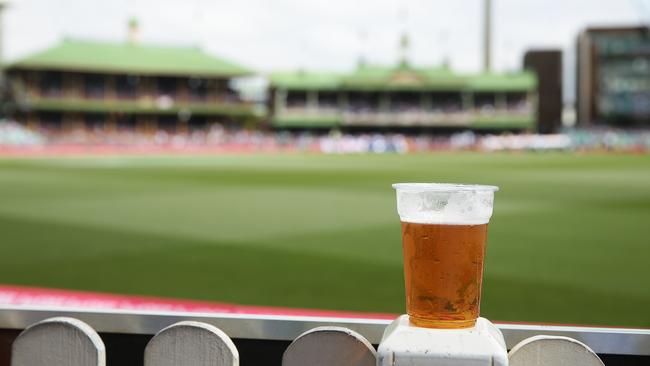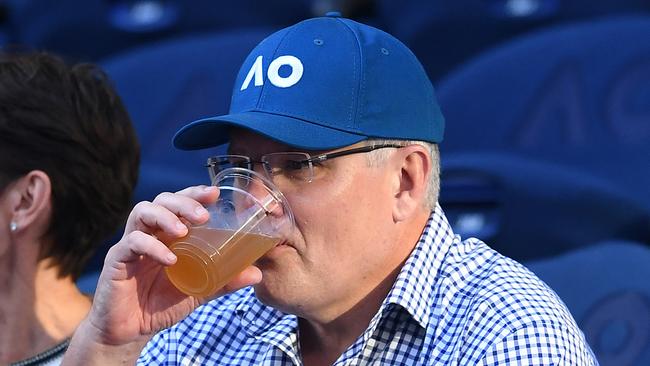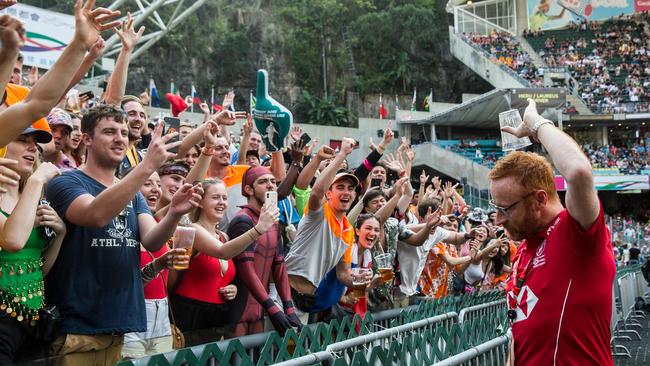Brett Heffernan: Why beer ads at televised sport are not putting kids at risk
Booze and kids don’t mix. That’s why it’s perfectly reasonable to advertise alcohol during major sports broadcasts. Confused? Here is a case where some facts might help.
Opinion
Don't miss out on the headlines from Opinion. Followed categories will be added to My News.
Booze and kids don’t mix. That’s why it’s perfectly reasonable to advertise alcohol during major sports broadcasts.
Confused? Here is a case where some facts might help.
Extensive research over two decades shows alcohol advertising is not a catalyst for youth attitudes to alcohol, drinking behaviour or uptake. Parents and peers are by far the principal influences.

MORE OPINION:
Bloody minded vegans deserve a roasting
ScoMo’s fair dinkum plan is failing miserably
Integrity isn’t meant to be partisan
Meanwhile, ratings data shows kids only make up around 10 per cent of audiences watching live free-to-air sports.
The emotive claim opposing sports advertising and sponsorship is that alcohol must be banned because it targets youth and, therefore, correlates with underage drinking, right? Wrong.
Over the past 40 years alcohol advertising has increased in volume and expanded its reach, especially in the past 10-15 years through digital and online media.
Yet, over the same period, every official Australian government indicator shows underage drinking in steep decline.
If the claims were true, in an era where sports sponsorship is the lifeblood of many codes, regional competitions and local club survival, the trends in underage drinking would be going up, not plummeting.
Not only is there no correlation between alcohol advertising or sports sponsorship and youth consumption, the body of scientific evidence and lived experience in countries where advertising bans have been in place, demonstrates the polar opposite.
Analysis of 17 OECD countries, most including longstanding bans on alcohol advertising, found the bans did not result in either a reduction in the number of new drinkers, a reduction in alcohol consumption overall, or a reduction in the rates of alcohol misuse.

University of Wollongong research in 2014 found that the predictors of frequent alcohol consumption among Australian adolescents are the drinking behaviours of parents, siblings and friends; believing parents, siblings or friends approved of them drinking; and having a sibling or a friend who consumed alcohol.
Across live free-to-air sport in Australia over 2017-19, adults accounted for a minimum 87 per cent of viewers.
This reality dispels the myth that sports sponsorship or advertising during sporting events targets kids.
OzTAM, Australia’s official source of television audience measurement, reveals that those aged 18 or more account for the vast majority of sport viewers. More than 90 per cent of viewers of cricket, the Australian Tennis Open, the NRL and AFL, Super Rugby, and beyond, fall into this age group.
These viewership numbers are way above the Alcohol Beverages Advertising Code requirement for a minimum 75 per cent adult audience before alcohol ads can be aired. This threshold is international best practice and strictly adhered to.

Of all the complaints received by the Advertising Standards Bureau in 2018, just 2 per cent were about alcohol.
What’s more, ABAC’s 2017 market research showed that its rulings are in fact stricter than community standards.
If there were community concerns about alcohol advertising, the official ASB and ABAC data would reflect it.
Rational people know the idea that someone seeing an ad or logo on a pair of shorts will be compelled to drink, is patently absurd.
Beer companies advertise during sports or sponsor sporting codes because the overwhelming majority of people watching are adults and, if you’re going to enjoy a beer during the game, they hope you’ll choose their brew over the other mob.
It’s that simple.
Brett Heffernan is CEO of the Brewers Association of Australia.


